Discover the fascinating history of the crowned kings of Bohemia, from the first monarch, Vratislav II, to the last, Charles I. (the period between 1085-1918).
The crowned kings of Bohemia were an integral part of the Czech country’s rich and complex history. Bohemia is a historical region of what is partly now Czech Republic – Moravia is the second largest historical region. Throughout history, the region was ruled by a succession of crowned kings, each leaving their mark on the land and its people.
In this blog post, I wanted to take a closer look at the crowned kings of Bohemia and set out a timeline, so that when you explore Prague and learn about the castles, churches or monasteries you get an idea of which king was in charge at that particular time.
When I set out to write this blog post, I wanted to just quickly write the list of the main kings of Bohemia. But the more I researched the topic, the more I got entangled in the intriguing history and started to remember what we were told during history lessons at school. Over the next two days, I tried to condense the most important pieces of information about each king, which of course, was nearly impossible!
There are so many dates, battles, knights, castles and towns, so I tried to pick facts which connect to the wider history and are also relatable to us in the 21st century.
I’d probably suggest that you use this blog post as a reference so that when you hear the name of a Bohemian or Czech king you can look it up here. Feel free to jump around and read just the bits that interest you.
But if you stick around you will find out, why the Czech school system is as comprehensive as it is, how we pretty much started the current English royal family (you are welcome…), why we eat so many potatoes and which king has such as good beard that he is the face of a 100 CZK note.
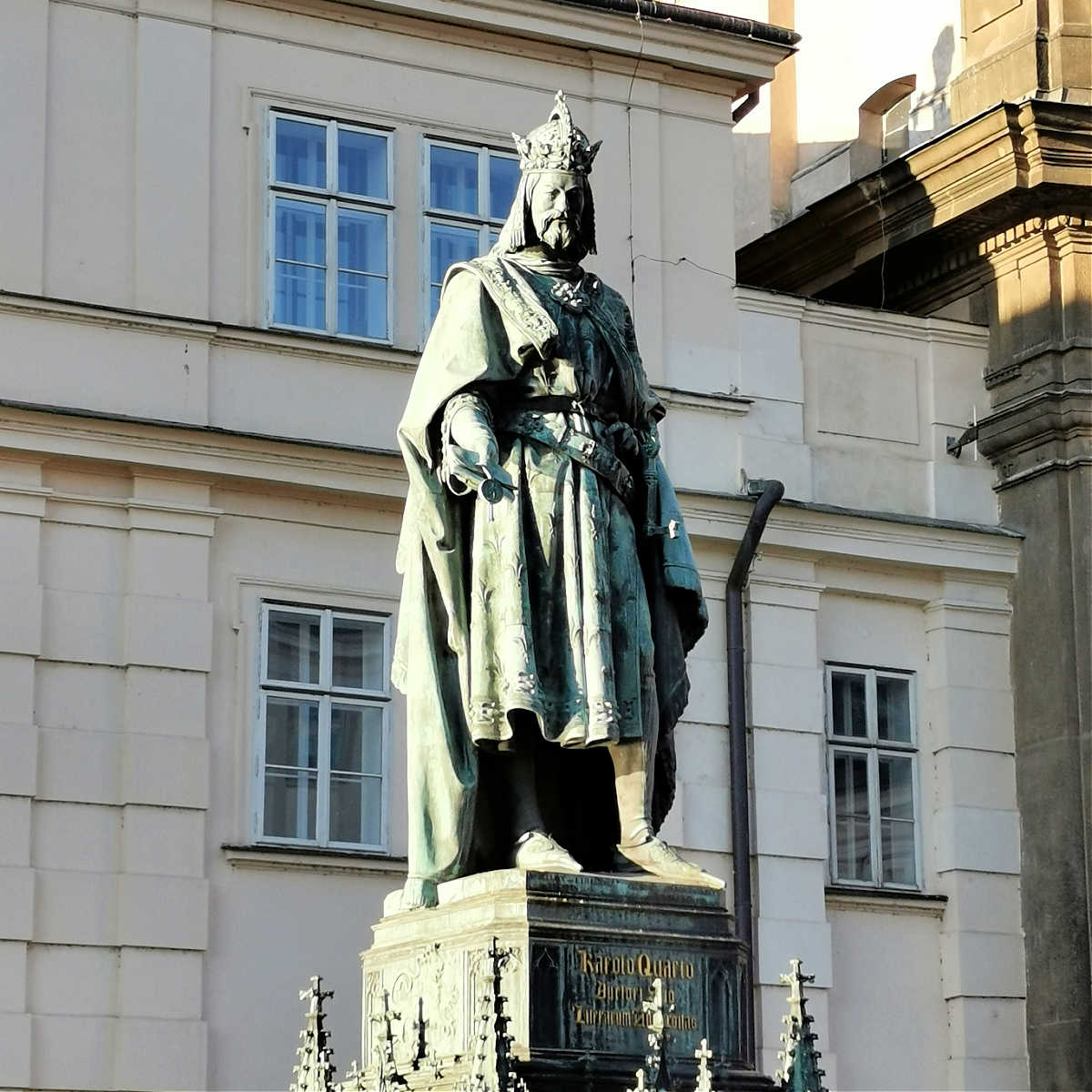
The history of how Bohemia was ruled
I should also mention, that before this line of Bohemian kings started, the Bohemian lands were ruled by individual dukes and knights since the 10th century. This is why you will not find the famous Wenceslas here because he was only a prince and not a king, although he was in charge of the Bohemian country. Also after the last king in 1918, Bohemia become Czechoslovakia and we had a succession of presidents rather than kings.
At the beginning of the line of crowned kings of Bohemia, you will also find a lot of gaps. This is because, Bohemia was ruled by the dukes or knights, which had pretty much the same power as kings, but they were not crowned or had the status of a king.
The other important thing to note is that, once the last Premyslovec king died, all further kings (apart from Jiri z Podebrad) were not Czech and often didn’t speak the Czech language and a lot of them ruled the country from other major cities within their kingdoms, not from Prague.
Because many Bohemian kings were also Roman Emperors, their whole empire stretched all the way to the sea. This is why, possibly, Shakespeare placed Bohemia by the sea in one of his plays.
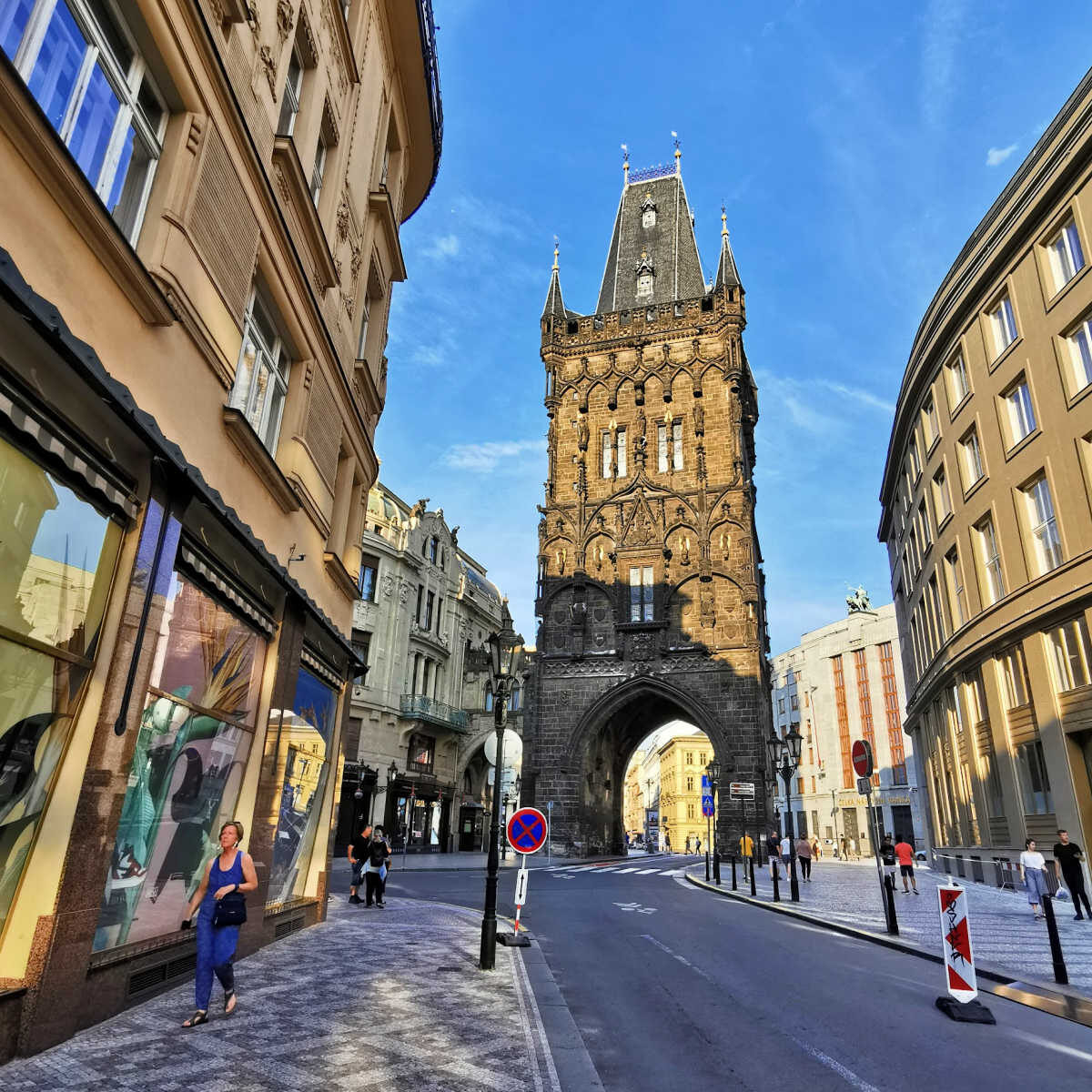
Traditional Bohemian Kings Coronation Route
The traditional Royal Route, also known as the Coronation Route, was the path taken by Czech kings during their coronation processions.
It runs through the historical centre of Prague, starting at the Republic Square (next to the gothic-style Powder Tower), where the original Kings Palace used to be, and passing through the Old Town Square over Charles Bridge and through Nerudova Street before ending at Prague Castle and St. Vitus Cathedral.
You can still take this route today as it’s a great way to get to Prague Castle, although if you want to save your feet, you might like to walk it in the opposite direction and walk down the hill rather than up.
Vratislav II.
The first king of Bohemia was Vratislav II, who was originally a Czech prince. He become a king in 1085 and passed away in 1092, so he was only a king for a fairly short period of 7 years. His coronation was on 15 June 1086, so he was the first Bohemian king to travel the King’s Route and be crowned at Prague Castle. Vratislav II was married three times and had 9 children. After his death, which was caused by complications from his falling off a horse, he was buried at the Vysehrad grounds (at the time there was also abbey there), but his grave was never found.
Vladislav I.
Vladislav I (1110 -1174) was originally chosen to represent Bohemia by other knights because he was young and carefree. The knights thought that they could control Vladislav I, but he proved them wrong. Vladislav I became the Prince of Bohemia in 1140 and crowded the King of Bohemia in 1158 in Rezno (not in Prague). He reigned until 1172.
Vladislav I built the first-ever bridge over the Vltava river called after his wife – the Judith Bridge. He also welcomed many monks orders to establish their monasteries in Bohemia and many famous monasteries were founded at the time, including Strahov, Plasy, Pomuk, Zeliv or Doksany).
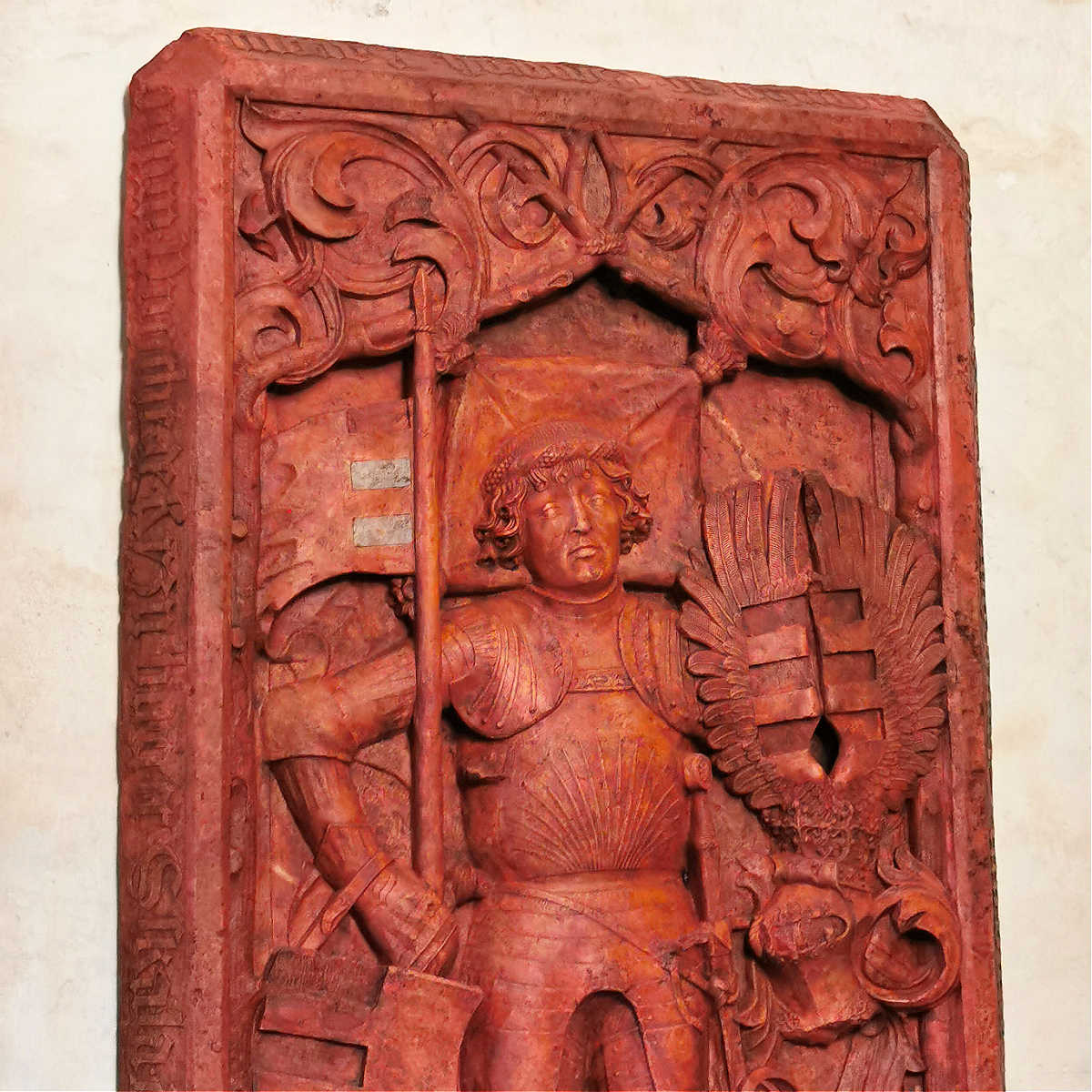
Přemysl Otakar I
Přemysl Otakar I. (Ottokar I) (1155-1230) – was the third king of the Přemyslovec dynasty and this was his second time in power. He was ruling over Bohemia as a Czech knight before he was crowned as a king in 1198 and reigned until his death in 1230.
Until his time it wasn’t given that the son of a king would become automatically the next king. Premysl Otakar ensured that that happened by passing such a law.
One of his daughters was Svata Anezka Ceska (St. Agnes) who founded the St.Agnes monastery and become a nun herself. The St. Agnes monastery is now an art gallery in the centre of Prague and you can visit the grounds and the area where the original monastery was.
Many castles and towns were founded during the Premysl Otakar reign, such as Kradec Hralove, Zatec, Litomerice.
VAclav I.
Václav I. (Wenceslaus I) (1205-1253) was the son of Přemysl Otakar I. and became the fourth king of Bohemia. He was crowned fairly young in 1228 whilst his father was still a king when he was just 23 years old.
He founded many castles such as Krivolat where he spent a lot of time hunting and entertaining. He also founded Olomouc, Brno, Zatec (there is a question whether it was his father who might have founded the town), Prague Old Town and many more.
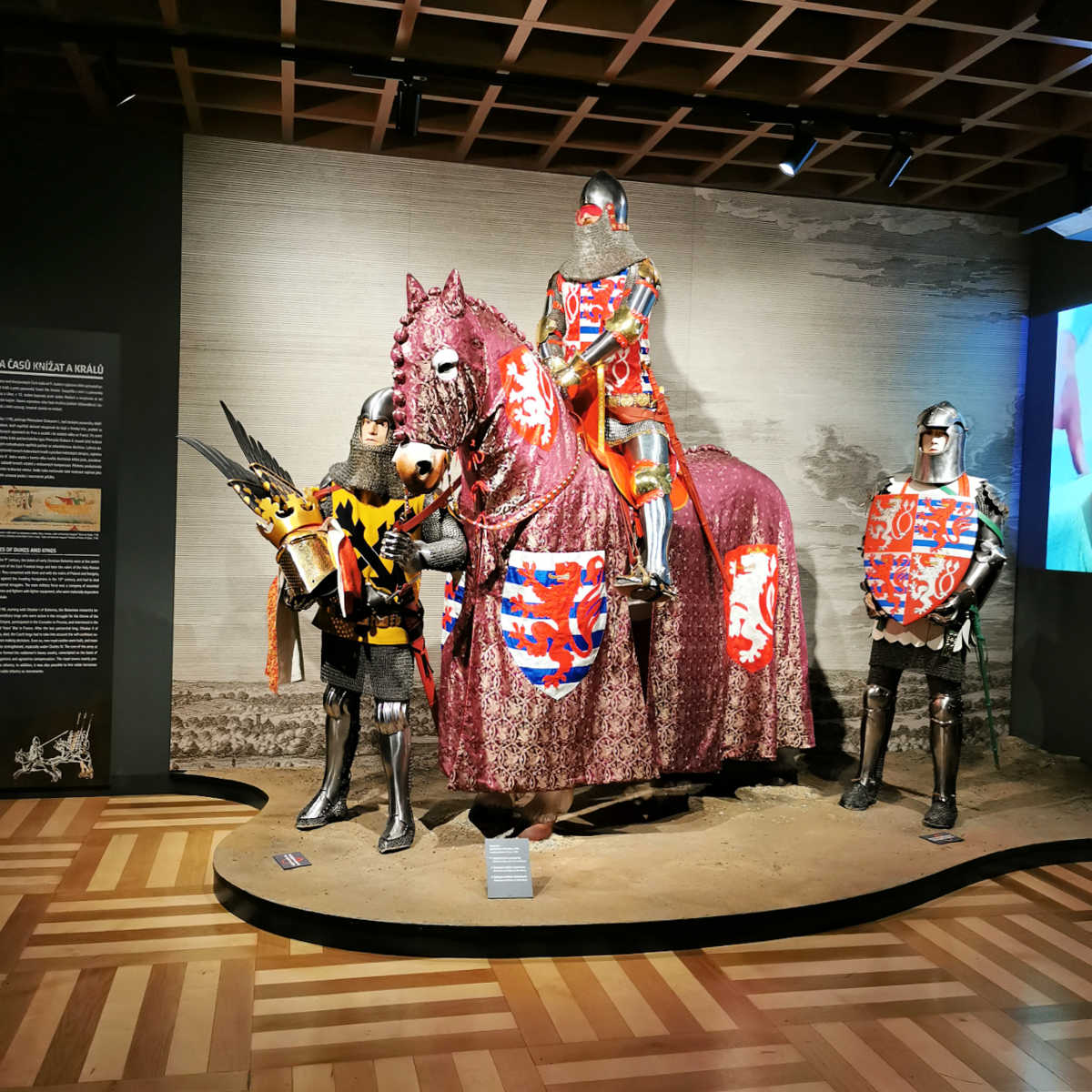
PRemysl Otakar II.
Přemysl Otakar II. (Ottokar II) was born in 1233 and died in battle in 1278. He was the son of Václav I. and the fifth official Bohemian King crowned in 1253. He founded many towns including Ceske Budejovice, Decin, Kolin or Pisek, castles Bezdez and monasteries such as Zlata Koruna (Golden Crown). He became one of the most significant Bohemian Kings and he also ruled over Austria, Styria, Carynthia and Carniola.
Vaclav II.
Vaclav II – Wenceslas II (1271 – 1305) was crowned as the sixth Bohemian King in 1297. He was also the king of Poland and he managed to secure Hungary for his son. His father died when he was only 7 years old and he was kept at Bezdez Castle (and other places) with his mother and his sister until he was ready to take over.
He established the silver mining in Kutna Hora which made Bohemian silver very popular especially when mines in Germany stopped producing more silver. He modernised the payment system by introducing the Prazsky Gros – Prague Silver Coin. He founded Zbraslav Monastery where he is also buried.
Vaclav III.
Vaclav III – Wenceslas III (1289-1306) was the last Premyslovec dynasty king. He was only 16 when he become King and also got married in the same year. He was the seventh Bohemian King but he was officially in charge for only a year from 1305 – 1306 as he was brutally murdered in Olomouc. He didn’t have any children.
JindRich KorutanskY
Jindrich Korutansky – Henry the Carinthian (1265 – 1335) was chosen by the Bohemian knights as the successor of Vaclav III. He was a king for only one year in 1306 and escaped the country with his wife Anna Premyslovna as Bohemia was under siege from Rudolf.
Rudolf I. Habsbursky
Rudolf I – Rudolph I of Habsburg (1281-1307) managed to snatch the reigns and become the king by bribing the Bohemian knights, but stayed in power only for a year 1306-1307 and died in a battle.
JindRich Korutansky (Second time)
Jindrich was a king again from 1307-1310 but the Bohemian knights were not particularly impressed with him so they asked for help from the Roman emperor Jindrich VII. whose son then became the next king.
Jan Lucembursky
In order to become the king of Bohemia, Jan Lucembursky – John of Luxembourg (1296 – 1346) married Eliška Přemyslovna (Elisabeth from the Přemyslid dynasty and the daughter of Vaclav II) in 1310 and he was crowned in 1311. He didn’t get on with the local knights, so he left the reigns to his son Karel IV and left Bohemia in 1333. In 1338 he founded the Old Town Hall – the first one in Bohemia. He also introduced the first golden coins, which were made in Prague from gold found around Jilove u Prahy (Jilove next to Prague). He was also keen on Prague having proper cobbled stones streets and allowed the Old Town and the Lesser Town counsellors to charge a small fee to each carriage that entered the town to pay for the stone tiles for the streets.
He died in the Battle of Crécy in 1346.
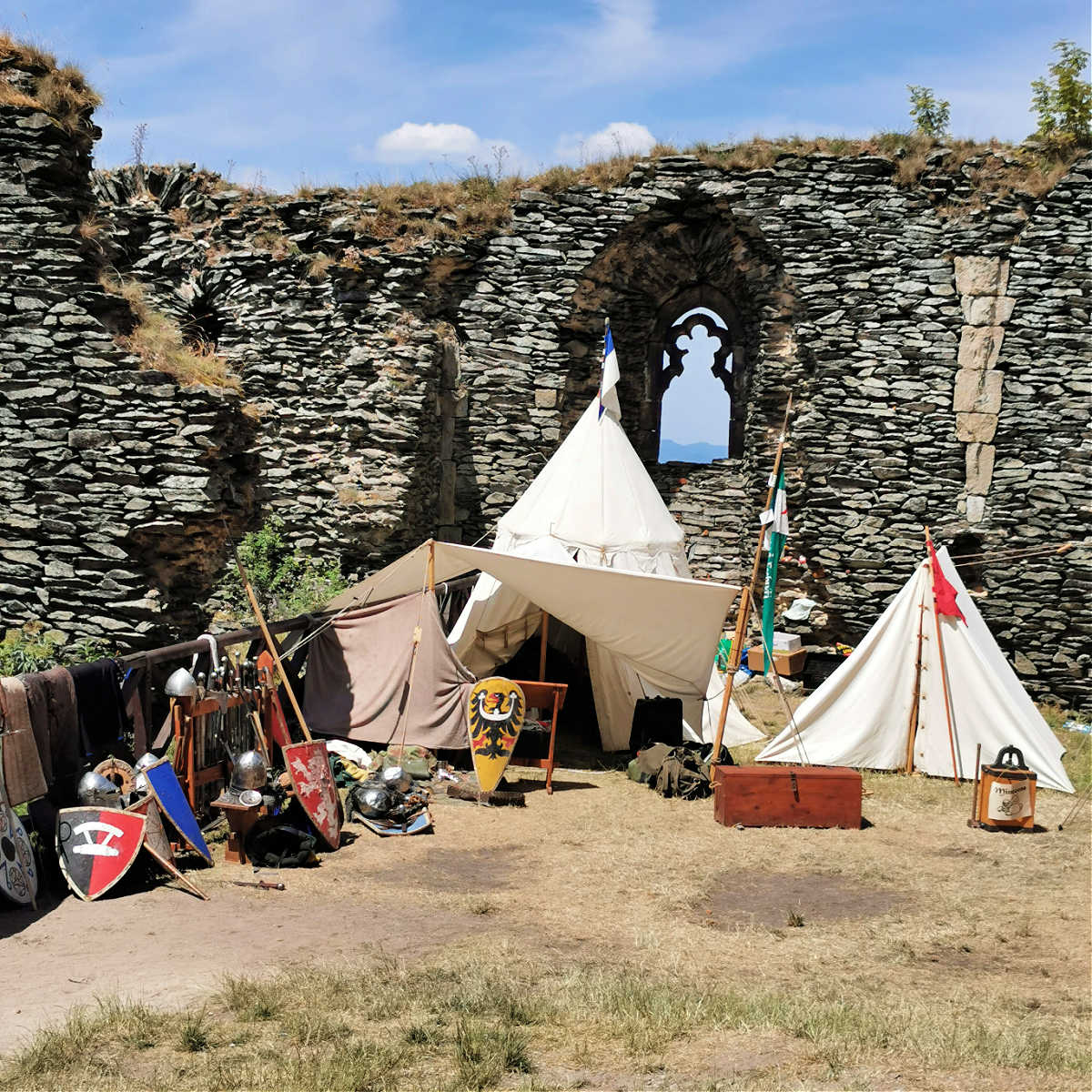
Karel IV. LucemburskY
Karel IV – Charles IV of Luxembourg – (1316 – 1378) is one of the most well-known kings of Bohemia and also the Margrave of Moravia and the Holy Roman Emperor (1355). He was a strong and clever king and Bohemia become the political and cultural centre of Europe during his reign (1346 – 1378).
He founded many towns, castles (Karlstejn) and also the new bridge over the river Vltava – Charles Bridge, Karlova Univerzita (Charles University), Nové Město pražské (New Town of Prague), Hladová zeď (Hungry Wall at the Petrin Hill in Prague), the town of Karlovy Vary and he started to build the St. Vitus Cathedral (where he is also buried).
Karel IV also founded many vineyards on the hills around Prague and many can be still seen, such as at the Prague Castle or Grebovka Park in Vinohrady. If you visit Prague in early September you can see many harvest celebrations and taste some locally produced wine.
You might also recognise Karel IV if you change your currency into Czech crowns and get 100 CZK note – the wise-looking man with a full beard and a crown is the king.
VAclav IV. LucemburskY
Vaclav IV – Wenceslas IV of Luxembourg (1361 – 1419) was the son of Charles IV and Anne of Swidnica and was crowned the King of Bohemia when he was only two years old (although he practically didn’t take over until he was 17 years old). He also became the King of the Holy Roman Empire in 1376.
Vaclav IV was married twice but didn’t have any children, which is why when he died, his brother Zikmund become the next king.
Vaclav IV is buried at the St. Vitus Cathedral at Prague Castle.
Zikmund Lucembursky
Zikmund – Sigismund of Luxembourg (1368 – 1437) become the king of Bohemia in 1419 and also the King of Hungary, Rome and Germany and the Holy Roman Emperor in 1433. He was never regarded well as a king partly because of his contribution to the death of Jan Hus, who was a forward-thinking priest who was burned at the stake for his beliefs. You can see Jan Hus statue at the Old Town Square in Prague and his life is celebrated each year on the 6th July (this day is one of the official public holidays in the Czech Republic).
Albrecht II. HabsburskY
Albrecht II – Albrecht II of Habsburg (1397 – 1439) was a son-in-law of Zikmund Lucemburský because he married his daughter Alzbeta (Elizabeth). Although Zikmund wanted him to be the Bohemian king, he had problems securing the throne. He was the Duke of Austria from 1404 but only in 1437 did he become the King of Bohemia and Hungary. A year later in 1438 he became the King of the Holy Roman Empire and he died not long after from a disease he contracted whilst in the battle.
Ladislav Pohrobek
Ladislav so-called Pohrobek (1440-1457) because he was born after his father Albrecht II passed away. Since he was just a baby he was given a guardian (Fridrich III from Habsburg dynasty) who ruled instead of him. Eventually, Ladislav was crowned the King of Bohemia in 1453 but whilst he was preparing for the arrival of his fiance (French princess Magdalena) the 17-year-old Ladislav contracted a disease and died three days later. Modern historians found evidence that Ladislav had a rare form of blood cancer, although at the time there were rumours that Jiri z Podebrad somehow caused his death because he wanted the throne.

Jiri z Podebrad
Jiri z Podebrad (1420 – 1471) – George of Poděbrad – was already the Bohemian Country Administrator when the previous king Ladislav died. In 1458 he was crowned the Bohemian King and was the only king of Bohemia who didn’t come from a royal family. He was a wise king, who even wanted to make peace and unify the whole of Europe.
Although he did have male successors, he decided to hand over the throne to the Polish dynasty of Jagellon.
You might recognise his name as one of the Prague Undeground Metro Station or the name of the main square in the Zizkov district of Prague.
Vladislav II. Jagellonsky
Vladislav II – Vladislaus II Jagiellonian (1456 – 1516) was chosen by Jiri z Podebrad to be the next king in 1471. Until 1478 he had to fight Matyas Korvin who was elected by a small number of Bohemian knights. Vladislav II was married three times, but had his only two children with his third wife Anna from Foix. Ludvik, the only son, wasn’t born until the king was 50 years old.
In 1515 Vladimir signed a special agreement with the Habsburgs dynasty for his daughter Anna to marry Ferdinand I Habsburg and this meant that Bohemia stayed under the Habsburg’s reign until 1918 when it become a free republic with his own president.
Ludvik Jagellonsky
Ludvik Jagellonsky – Louis the Jagiellonian (1506 – 1526). He was crowned in Prague as a 2-year-old baby, but he didn’t take the reigns until 1516 when his father died. He married Marie Habsburg in 1522 when he was only 16 years old and he never had any children. He died in the Battle of Mohacs in 1526.
Ferdinand I. Habsbursky
Ferdinand I – Ferdinand I of Habsburg (1503 – 1564). He was already married to Anna the daughter of Vladislav II and when his brother-in-law Ludvik died in 1526 he become the king of Hungary and Bohemia. He was also the Holy Roman King and later also Emperor.
He had 15 children with his wife and is buried in the St. Vitus Cathedral.
Maxmilian II. Habsbursky
Maxmilian II – Maximilian II of Habsburg (1527 – 1576) became the Bohemian King in 1564 and later also became the Holy Roman Emperor and Hungarian King. He had 16 children with his wife Marie the Spanish (she was also his cousin). Maximilian is buried in St. Vitus Cathedral at Prague Castle.
Rudolf II.
Rudolf II – Rudolph II (1552 – 1612). He became the King of Bohemia after his father’s death in 1575 and was also the King of Hungary, Germany and Holy Roman Emperor.
Rudolph II was the only Habsburg King to choose Prague as the main city of his kingdom. You might know the stories about Rudolf II and his interest in art, alchemists and scientists, which he would host at Prague Castle.
He was not a very well man and together with some political plotting from the disloyal Bohemian knights he eventually had to abdicate and let his brother Matthias take over in 1611. Rudolph II died only a year later and is buried in St. Vitus Cathedral.
Rudolf II never married, although he had many children with his lovers, including Julio Caesar (his probably first born son), who unfortunately inherited his father’s mental dysfunction and suffered from schizophrenia which made him violent. When he was 21 he killed a servant and was sent to Cesky Krumlov castle to be kept in a home prison. He fell in love with a local girl from a poor background, who he attracted only to throw her down from the castle. The poor girl survived, but Julio Caesar talked her parents into allowing him to marry her. One day Julio was violent again and this time his wife didn’t survive. He even made a coffin the next day to hide her body. He was locked at the castle, whilst still very violent, shouting at the people as they were walking by and died soon afterwards.
Matyas I.
Matyas I – Matthias! (1557 – 1619) became the King of Bohemia, Hungary and Holy Roman Emperor in 1611. Matthias moved the main royal residence to Vienna and didn’t spend much time in Prague. He didn’t have any children.
Ferdinand II
Ferdinand II (1578 – 1637) was a cousin of Matyas and became the king of Bohemia in 1619. During his reign he was fighting with Fridlich Falcky who was elected by certain Bohemian knights.
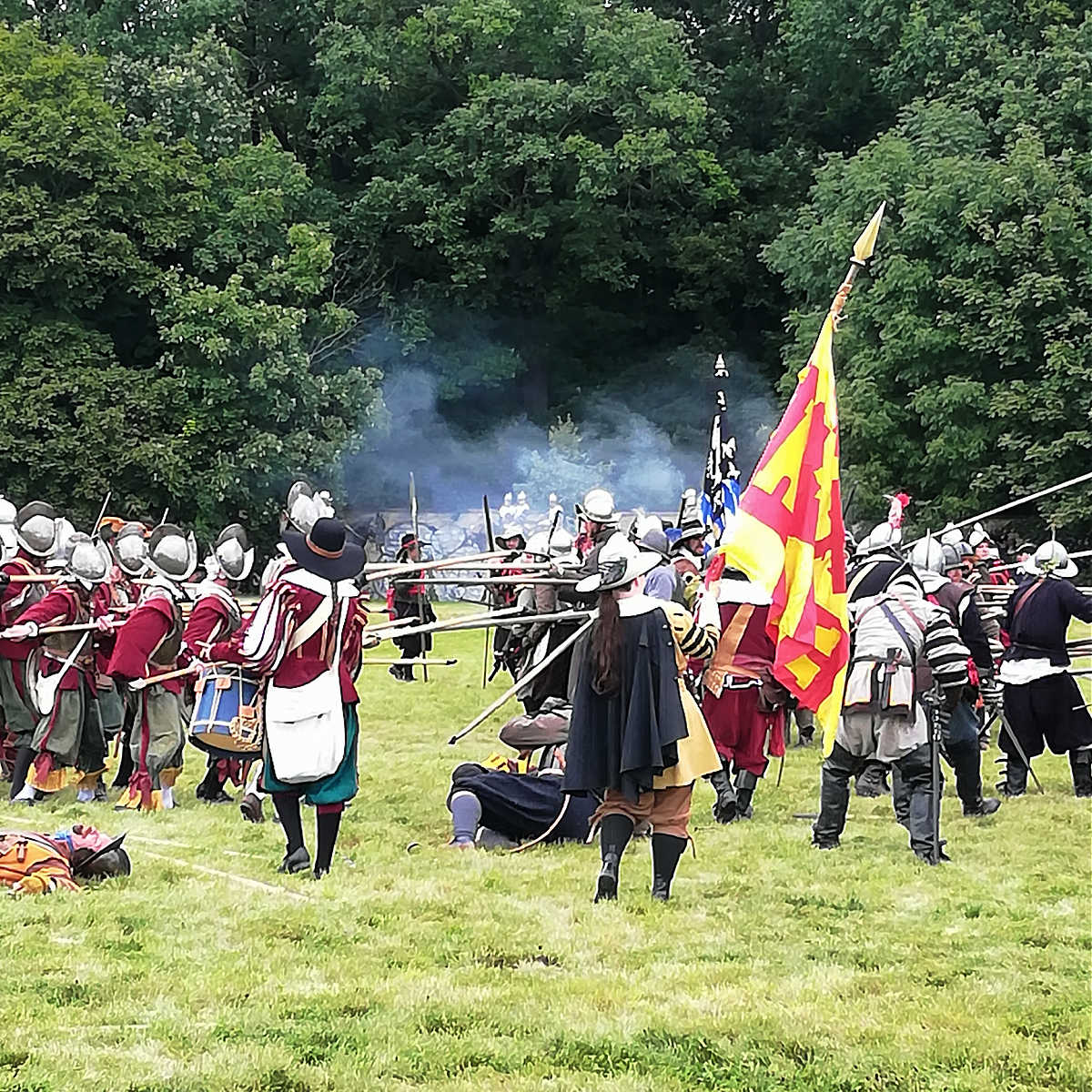
Fridrich Falcký (Frederick of the Palatine)
You might hear Fridrich Falcky name mentioned as the king who fled the country during the battle of the White Mountain in 1620. If you visit Prague in September, you can see the battle re-enactment which is acted out each year very close to the actual site of the battle and you can also visit the White Mountain, where the battle took place.
Whist Fridrich Falcky (1596 – 1632) was a weak king and only lasted one winter (he is also nicknamed ‘the Winter King’ (1619-1620) he practically was at the beginning of the current British Royal line. His wife was the daughter of English and Scottish king James I Stuart (1566-1625). Together they had 12 children (only 7 lived to an adult age) and their 12th child was Zofie (Sophia) who married Arnost August Brunswick – Luneburg from Hanover. Sophia had 7 children and her firstborn child – JIri Ludvik – George Ludwick (1660-1727) become the king of Great Britain and Scotland.
The reason, why this happened was that in 1701 the British parliament passed the so-called ‘Act of Settlement’ which specified that no Catholic person could become a king. This meant that the current line of Kings (who had the direct right to the British throne) was taken out of the picture and suddenly this ‘sideline’ part of the family from Hanover become the prime line of all the English Kings. What I also find pretty amazing is that whilst Sophia considered herself ‘English’ and spoke fluent English and knew the culture and history, her son George couldn’t speak English! When he become the king of England and Scotland at the age of 54 he communicated in German and only later did he get some understanding of the English language.
Ferdinand II.
Ferdinand II (1578 – 1637) was the Bohemian king between the years 1620-1637 and he pushed back on the rebellious knights in Bohemia and took control by force. He was the king who instructed the main opposition knights to be executed on the 21 June 1621 at the Old Town Square. When you visit the Old Town Square today, you can see the site of the execution and learn more about it. During his reign, everyone was forced to convert to Catholicism and many Protestant people emigrated rather than convert.
Ferdinand III.
Ferdinand III (1608 – 1657) was Bohemian king between the years 1637-1657 and he continued with the re-catholicism of the whole country that his father started, but he was a lot more considered. He was the only Habsburg King who was actually a good soldier and knew how to successfully lead tactical battles and army.
He initiated the building of the St Mary column in 1650 which was erected on the Old Town Square in Prague. In 1918 it got pulled down by drunken people opposed to the Monarchy and recently in 2022 was rebuilt again.
He was still wary of opposing forces, so he ordered a lot of Bohemian castles to be demolished. He also took the Czech crown jewels from Prague to Vienna and they were not returned back to Prague until 1867.
Leopold I.
Leopold I (1640-1705) become Bohemian king in 1657 until his death in 1705. He was brought up to become a religious man, because he was never meant to become king. Unfortunately, his older brother died and Leopold become the Bohemian king instead.
Josef I.
Josef I – Joseph I (1678 – 1711) was in charge of Bohemia between 1705 – 1711 but technically he was never crowned as a Czech king and he very rarely visited the country choosing to run his empire from Vienna.
Karel II or Karel VI
Karel II or Karel VI – Charles II (1685-1740) become the king of Bohemia in 1711 until his death in 1740. He was also the King of Spain, Hungary, Moravia, Austria and the Holy Roman Emperor as were many of the Bohemian Kings. He didn’t speak Czech and he only visited Bohemia four times during his life. He managed to pass a law, which allowed daughters of kings to become the rulers (and not just the sons as it was customary until then), which is why Marie Terezie become the next one to rule.
Marie Terezie (Mary Theresia)
Marie Terezie – Mary Theresia (1717 – 1780) become the Queen of Bohemia and Hungary and Archduchess of Austria in 1740 and was the only Queen that Bohemia ever had. Her older brother died as a baby, so she was the oldest child of King Leopold. She spend a lot more time in the Czech lands, but the beginnings of her reign were not easy. The other noblemen and knights objected to having a woman as their ruler and Marie Terezie was already five months pregnant with her third child. At the beginning of her reign, she also had to fight with Karel III Albrecht who was pronounced Czech king by the opposition noblemen.
Marie Teresie somehow managed to successfully rule the country for 40 years and have 16 children at the same time.
One of her daughters was Marie Antoinette who married Ludvik – Louis XVI who later become the French King (and got executed during the French Revolution). Marie Antoinette lived a very frivolous life and apparently said (and this is not proven) when told that people are so poor that they had run out of bread to eat, that they should eat cakes instead!
But back to Marie Therese who behaved much more like a proper king (than many male kings before or after). She started many judicial, educational and political reforms, such as counting all the properties and lands in the country, insisting that children (both boys and girls) had at least 6 years of education. During this time the first banknotes were published, farming was modernised and potatoes become an important crop for Czech farmers. From 1770 the law also stipulated that all houses had to have a number and not only in the towns but in the villages too.
Josef II.
Josef II – Joseph II (1741 – 1790) was the King of Bohemia only for 10 years – from 1780-1790. He continue the work his mother started and by all accounts, he was a bit of a workaholic. He worked 12-18 hrs a day and got over 6000 different rules approved during his time as a king. He improved the lives of farmers, poor people and also Jewish people. One of the quirky rules that Josef II suggested also included the rule that people should start using proper surnames and these shouldn’t change. Until then people only used surnames as a way of distinguishing between two people of the same first name – like Jan Rybar (John who works as a fisherman) or Jan Kovar (John who is a blacksmith).
If you’ve seen the film Amadeus by the Czech film director Milos Forman, Joseph II plays an important role of an admirer of art and music and supports Mozart through his stay in Prague. The film was filmed at locations in and around Prague including inside the Estates Theatre in Prague.
Josef II only had two daughters, who didn’t survive into adult age, which is why after his death, his brother Leopold took over.
Leopold II
Leopold II (1747 – 1792) was a brother of Josef II and become the king of Bohemia for only 2 years between 1790-1792. He was sympathetic towards the Czech country, he could understand the Czech language and spent some time visiting the country. Prague celebrated the coronation of the new king by putting on the first-ever industrial exhibition in Klementinum and in the Estate Theatre they played a specially commissioned opera by Mozart called La Clemenza di Tito.
Unfortunately, the king died suddenly when he was only 45 years old because he had a weak heart.
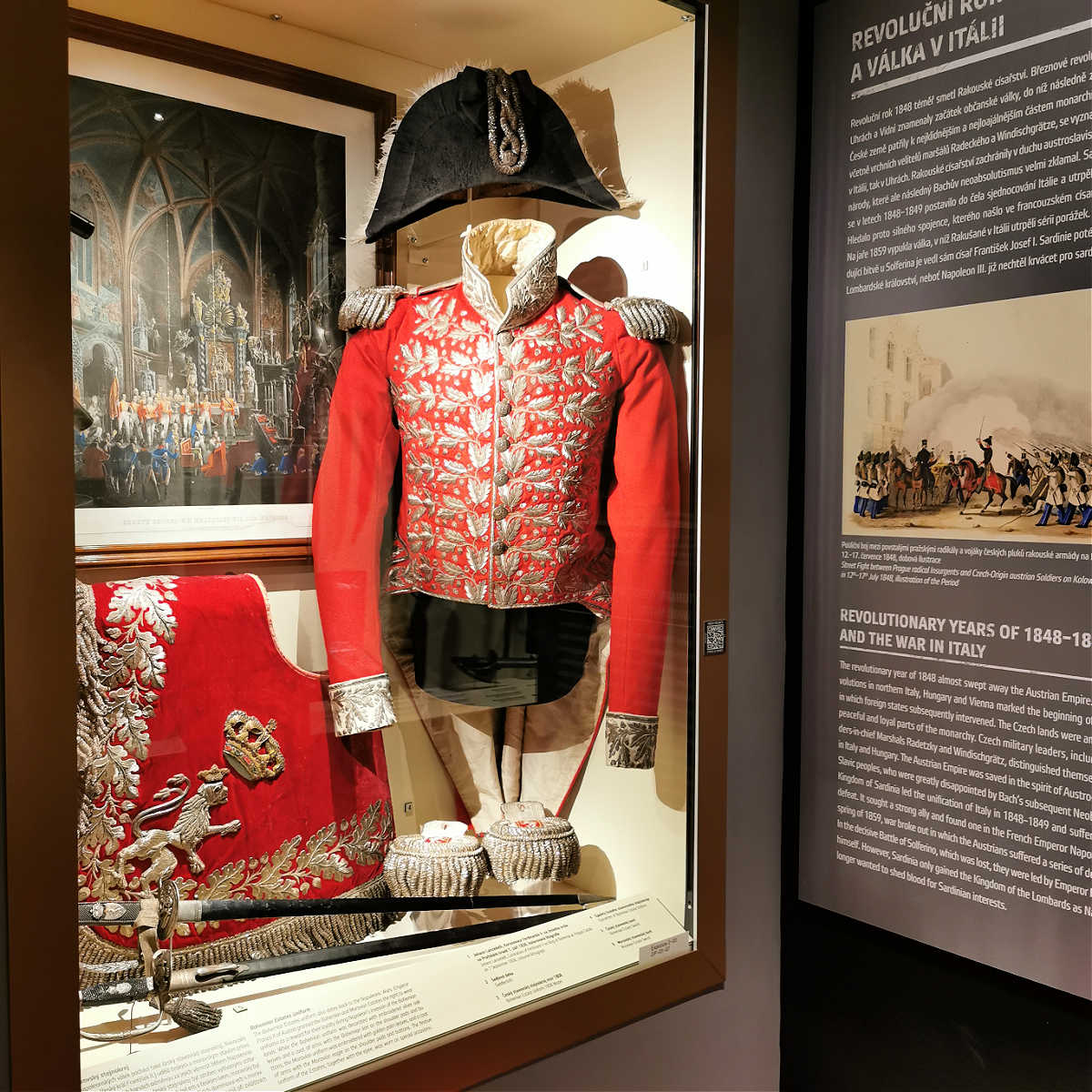
FrantiSek I
Frantisek I – Francis I (1768 – 1835) was apparently a mild-mannered man who liked to dress modestly and often would walk around the town and happily said ‘hello’ to people passing by. He was the Bohemian King from 1792 – 1835. Because he married his first cousin most of his children unfortunately had genetical problems and only few of them were able to live independently. His second-born daughter Marie Luisa was the wife of Napoleon Bonaparte and become the French Queen for a brief 4 years in 1810. She gave Napoleon Bonaparte the only legitimate son Napoleon Frances Joseph Charles Bonaparte who was practically brought up by his grandfather Frantisek I. Marie Luisa didn’t follow Napoleon to exile to Elba island and instead went on to live in Vienna and had further children with her two husbands. She rarely saw her firstborn son and he died when he was 21 from tuberculosis.
Ferdinand V Dobrotivy
Ferdinand V also known as ‘Dobrotivy’ – Ferdinand the Gracious or Well-Meaning (1793-1875) was technically the last crowned Czech king from 1835 – 1848. He abdicated in 1848 and his nephew took over.
Ferdinand suffered from epilepsy and until the age of 9, he didn’t have any formal education because the doctors believed that any exertion (mental or physical) would make his condition worse. He proved his doctors wrong, because it’s documented that he was interested in botany, technology, played piano and could speak five languages.
He was quite a well-liked king, but in reality, he didn’t have much power. All decisions were made by the councillor Metternich who was asked by Frantisek (the king’s father) to rule. The political situation got worse in 1848 and Ferdinand was asked to step down.
Ferdinand carried on living a reasonably comfortable life – he was given a whole wing at the Prague Castle and also purchased the castles of Ploskovice and Zakupy, where he spent a lot of time. He also walked around Prague and often gave passing children sweets and money to street beggars. Despite his illness, he lived until he was 82 years old and whilst he was married to Maria Anna from Savoj, for many years, he never had any children.
FrantiSek Josef I.
Frantisek Josef I – Francis Joseph I (1830 – 1916), also known as Franz Joseph I, was not technically a Bohemian king but was the Emperor of Austria and King of Hungary from 1848 to 1916.
During his long reign lasting 68 years, he had to face many political challenges, including revolutions, the formation of Austro-Hungarian state, the rise of nationalism in the Czech lands and of course the assassination of his nominated successor, Archduke Franz Ferdinand, which started the first World War.
His private life was also very eventful – his firstborn daughter unfortunately died when she was a child because of the black cough (whooping cough), his wife (Alzbeta Bavorska also known as Sisi) become more and more distant and in 1898 was tragically murdered. His only son and chosen successor Rudolf was a tortured soul and committed suicide together with his mistress in 1889.
Karel i or III.
Karel I or III – Charles I (1887 – 1922) was the last Emperor of Austria, King of Hungary, and the last monarch of the House of Habsburg-Lorraine. He became the last King of Bohemia (not officially crowned) after the Austro-Hungarian Empire dissolved following World War I. in 1916-1918.
Charles I attempted to reform the empire, but his efforts were hampered by the war and opposition from various political groups. He was exiled to the Portuguese island of Madeira, where he died at the age of 34. In 2004, he was blessed by the Catholic Church for his peaceful actions during the war.
This blog post was originally written on 18 July 2023 and last updated on 18 July 2023
PIN TO KEEP FOR LATER

